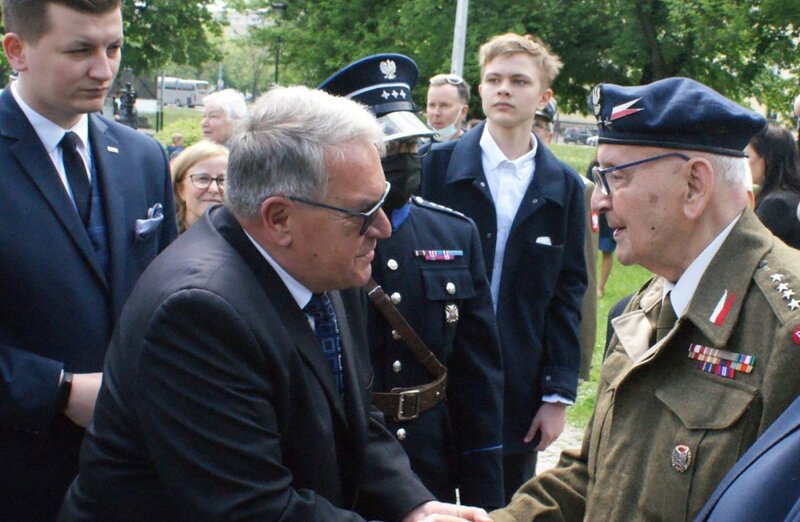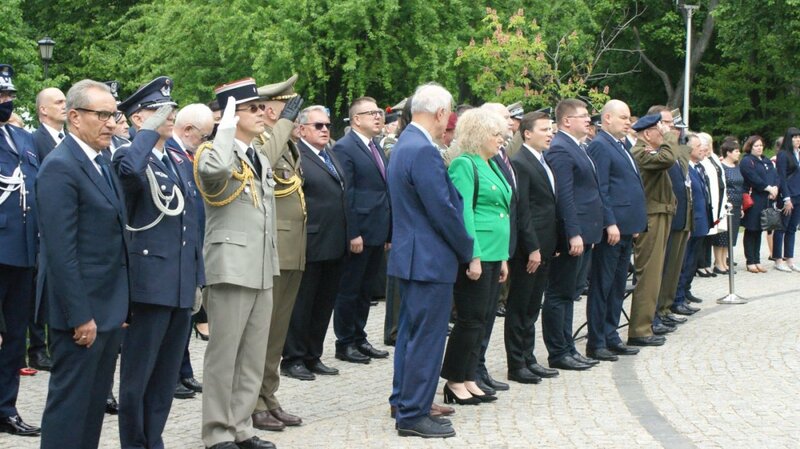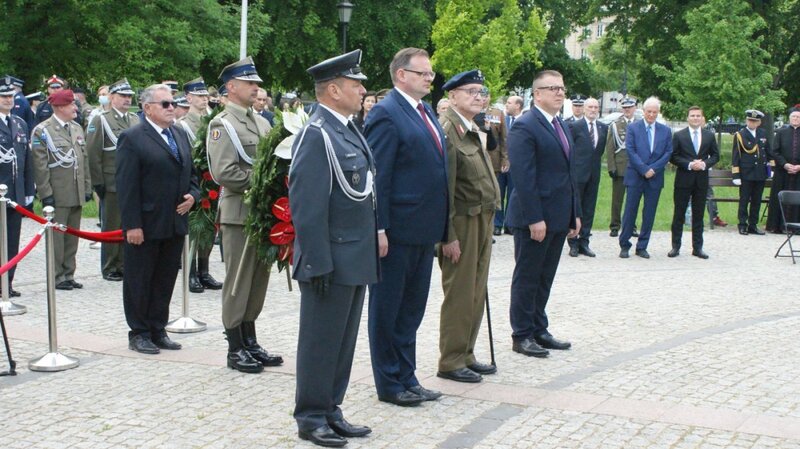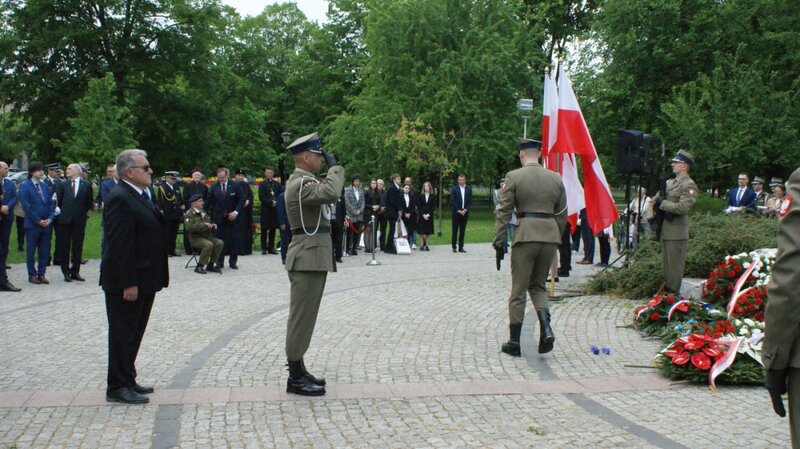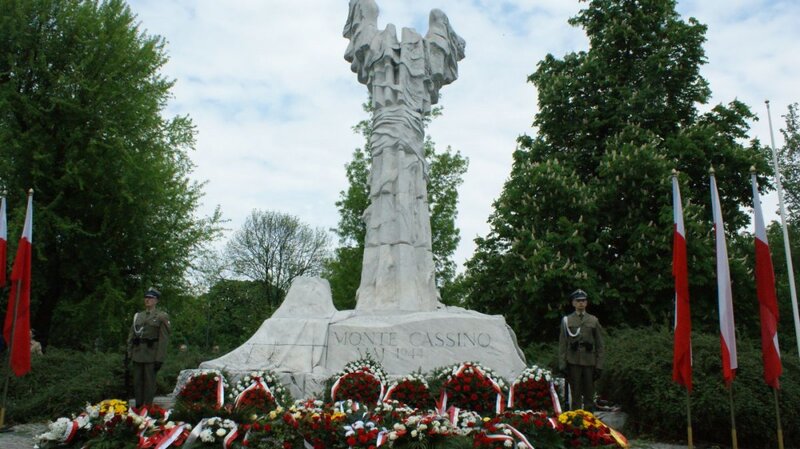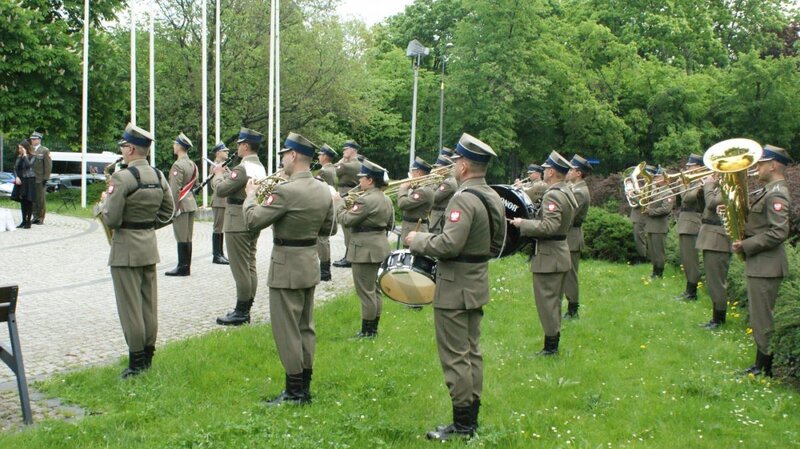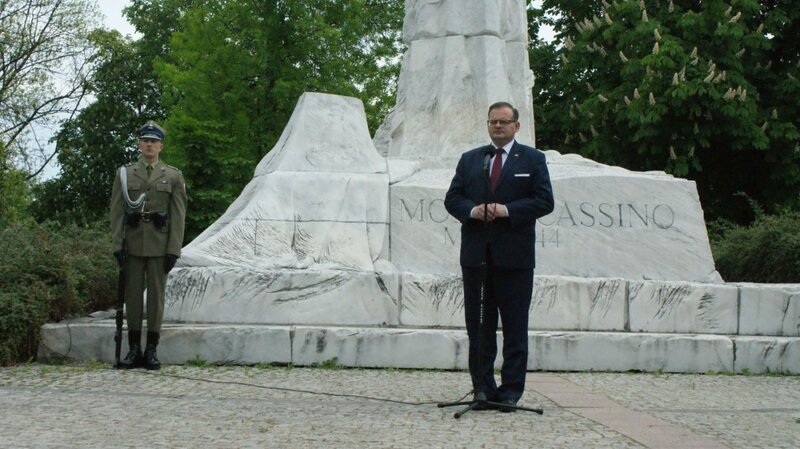Jan Baster, Deputy President of the Institute of National Remembrance, took part in the event together with representatives of the highest authorities and state institutions, diplomats and the organizer - the Office for Veterans and Victims of Oppression. The special guest was Cpt. Władysław Dąbrowski, one of the last surviving veterans of the Ander Army, honored during the ceremony with a historical Polish saber from the interwar period.
During the ceremony, tribute was paid to the conquerors of the monastery in Monte Cassino by saying a common prayer and laying wreaths at the monument on Żołnerzy Tułaczy Square in General Anders Street.
* * *
At Monte Cassino, the Allies – among them Polish 2nd Corps – faced German paratroopers, Italian mountains and Pleistocene geology.
In May 1944, during the fourth Allied advance, codenamed Operation Diadem, the abbey of Monte Cassino was everything a soldier hates in war, rolled into one. A tourist needs all but two hours to reach the peak, with hardly any effort. In 1944, Allied soldiers needed five months, prodigious bravery, tons of hardware, and thousands of replacements to break the German defence.
First of all, it is in central Apennines – and that region is, alternately, mountain ridges and rivers; coming from the South, like the Allies did, you scale a ridge, and then you have to cross a river to scale another ridge. Since the abbey sat on top of the hill, it was a total tactical disaster for the attackers, because the basic military rule requires that you attack from the higher ground.
What’s more, just like elsewhere on the Gustav Line, the Germans had geology on their side: the attackers went up colluvium slopes, waded in lacustrine muds, climbed steep and slippery river banks, their vehicles got stuck in mires, the troops, unable to dig foxholes in bedrock, were totally exposed to enemy fire, while artillery shells turned rocks shards into lethal bullets.
On top of all that were top-class defenders: the 1st Parachute Division were elite force that had fought in Denmark and Norway in 1940, landed on Crete in 1941, and defended Sicily in 1943. They were battle-hardened, superbly trained veterans, who had prepared, digging into the hill and installing kilometers of barbwire entanglements and hectares of minefields on the approach.
Finally, the Allied troops were allied, meaning numerous (as opposed to a homogenous force). British, American, Polish, French, Canadian, New Zealand, South African and Italian soldiers got under operational command of Generals Leese and Clark, who did not always see eye to eye; these two answered to General Sir Harold Alexander, a man too gentle to control them, and the result was a number of tactical errors.
Yet, errors or no errors, geology or no geology, paratroopers or no paratroopers, they did it - and the Poles of the 2nd Corps did it first.
